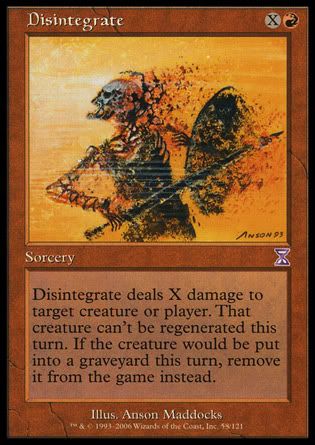orion90000
First Post
Does a creature who has been disintegrated (transmuted to dust) still regenerate?

So it comes down to Rules text vs Example text.3.5 MM, page 314: "Attack forms that don't deal hit point damage (for example, most poisons and disintegration) ignore regeneration." This is virtually identical to the language used in the 3.0 DMG.
Except the disintegrate spell does deal hit point damage in 3.5. (It did not in 3.0, unless you made your saving throw.)
RE-EDIT: Note that nonlethal damage never actually reduces a creatures HP total so the complete Disintegrate clause would not trigger. RE-RE-EDIT: Not saying its a bad ruling, just noting the technicality due to the RAW on non lethal damage.My answer would be that if you deal enough damage to reduce the creature to dust, it's disintegrated and can't regenerate, but otherwise it regenerates the damage as normal.
3.5 MM, page 314: "Attack forms that don't deal hit point damage (for example, most poisons and disintegration) ignore regeneration."
